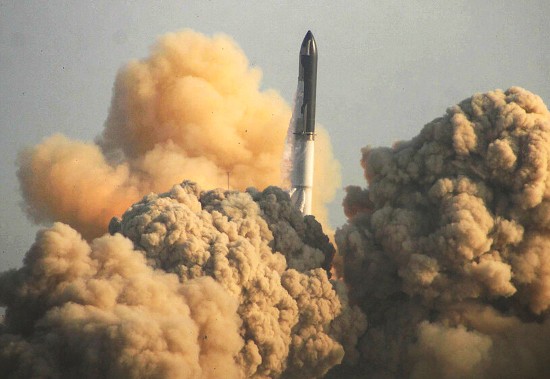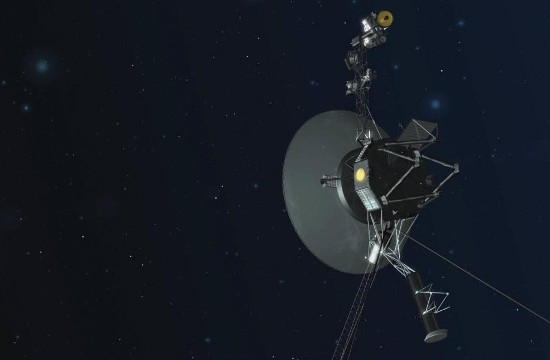In 1977, NASA launched two robotic spacecraft to the outer planets of the Solar System. Voyager’s 1 and 2, have now travelled farther in space than any human-created object with number 2 having exceeded 20 billion kilometres (12 billion miles) in its journey.
The original mission of Voyager 2 was a grand tour that would take it past Jupiter, Saturn, Uranus and Neptune. Launched on August 20, 1977, its instrumentation included cameras to image the outer planets, a magnetometer, ultraviolet, infrared and plasma spectrometers, plasma waves, charged particles and planetary radio astronomy experiments, a cosmic ray telescope and a radio system to stay in touch with NASA’s Jet Propulsion Laboratory (JPL) in Pasadena, California.
Today, both Voyagers have left the heliosphere (Voyager 2 in 2012) which is the Sun’s domain and serves to protect us here in the Solar System from interstellar radiation and charged particles. As the two Voyagers age, JPL keeps in touch with Linda Spilker, a project scientist, in charge.
Both Voyagers have three radioisotope thermoelectric generators on board that convert heat from a decaying plutonium-238 core to generate electricity. Now, almost 45 years later, the generators continue to power the onboard scientific instrumentation. But each year, however, the energy yield is declining as the plutonium decays further. So JPL makes choices. Which instruments can still provide the best bang for the buck, and which can be switched off to conserve the spacecraft’s remaining power source?
Spilker in a JPL press release from yesterday notes that the data from the Voyagers “gets more valuable the farther away from the Sun they go.” That’s why keeping as many instruments running is so important.
Recently, JPL faced a decision on whether to turn off one of the instruments that are still sending data back to Earth, a trip that takes 22 hours each way. The decline in electricity being generated within the spacecraft meant the JPL team had to determine whether to continue keeping all of the science going while turning off the remaining non-essential physical systems that draw power.
Do you turn off the heaters? Do you turn off one or more instrumentation packages? If the latter, which ones would least diminish the value of the continuing mission science?
A workaround was proposed, to hack the Voyager 2’s control systems to steal power from onboard safety systems that protect the spacecraft from voltage spikes. It means voltage will not be regulated as tightly on board. Should a spike occur which would be seen in the data being received, the JPL team can respond manually. At least the 5 remaining instrument packages will continue to send data back to Earth. A mission that was originally only to last four years just keeps on going and going.
It is a testament to the engineering of the Voyager 2 and to the continuous monitoring of its health that four years have stretched to 45 and will go on likely for several more years before both Voyagers go silent. On board, they will still have a gold disk that should an alien intelligence encounter them in the future, the spacecraft will still be able to deliver a message from us here on Earth.
Other Space News You Couldn’t Have Missed This Week
The long-awaited debut of SpaceX’s Starship suborbital flight has come and gone with a giant roar followed by a colossal explosion and enough collateral damage to Lower Texas to make you wonder how the company could declare this launch a success.
Back in the late 1950s and early 60s, launch failures were a normal occurrence with rockets blowing up on the pad, veering off course, or even failing to light. But the success we have witnessed since has spoiled us until SpaceX started testing the Starship. We’ve witnessed this giant experiment from the beginning with explosions and fires. We have forgotten that before the Falcon 9 and the arrival of the Dragon capsule, SpaceX went through a similar experience with that now very successful rocket system.
So maybe we need to cut SpaceX some slack for not getting it 100% right the first time off the launch pad. One SpaceX engineer stated that if it cleared the launch tower it could have been called a success.
The only issue I have is why didn’t SpaceX put in place launch infrastructure similar to what NASA deployed for the Saturn 5 and the Space Launch System (SLS) so that sand and dust didn’t get spread for miles, and pieces of the launch tower and pad infrastructure didn’t end up raining down on nearby cars and homes. This was a corner that should not have been cut considering the proximity of SpaceX Texas facilities to the people living nearby. Fortunately, nobody was injured or killed by the debris.










